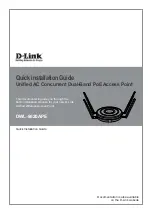
WEA453e Installation Manual
Version 1.0
Samsung Electronics America
Page
49
of
117
In areas where the cable may be damaged by external factors, investigate what
materials can be used to protect the cable, such as a cable tray, ducts, flexible pipes,
etc.
Cutting the Cable
Measure the exact length of the cable you require by carefully checking the route and then
cut the cable using a cutting tool.
Consider the followings when cutting the cable:
Cut the cable to the length measured in the previous cable route step.
Use a cable cutting tool.
Cut the cable at a right angle.
Be careful to keep the cable away from moisture, iron, lead, dust, or any other foreign
substance when cutting it.
If the cable is in contact with foreign substances, clean it using a solvent or brush.
Installing the Cable
Installing the cable involves arranging the cable along the cable route to the target
connector of the system, or to an auxiliary device, after checking the previous cable route
and cutting steps have been completed.
Consider the following when installing the cable:
Be careful not to damage the cable.
If the cable is damaged, cut out the damaged section before installation.
When overlaying other cables with the installed ones, make sure the cables are not
flipped over. Pay close attention to the parts where a horizontal line changes to a
vertical line in order to prevent any cables flipping.
Apply as great a bend radius as possible within the specified minimum bend radius.
If the cable needs to be protected, use a PVC channel, spiral sleeve, flexible pipe, or
cable rack when installing the cable.
Keep DC power cables and data transmission cables away from AC power cables to
prevent electromagnetic induction.
Table 16.
Minimum Cable Bend Radius Allowed
No.
Type
Minimum Allowed Bend Radius
Description
1
F-GV/F-CV/FR-8
8 times the external diameter of the
cable
0.6/1 KV Cable
2
UTP/FTP/S-FTP cable
4 times the external diameter of the
cable
PVC/LSZH, 4 Pair
















































